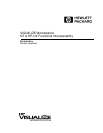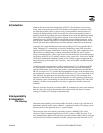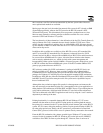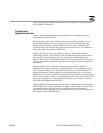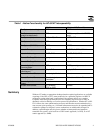
02/04/00 HP VISUALIZE WORKSTATIONS 1
Introduction
Windows NT has much of the functionality of HP-UX. This similarity exists at many
levels, from an integrated, secure GUI user interface environment to coexistence of the
two Operating Systems (OSs) at various levels of interoperability and integration. For
instance, the interoperability of HP-UX and NT allows these two operating systems to
mutually participate in printing and several different forms of file and application sharing.
This is because both HP-UX (using add-on software for non-IP protocols) and NT can
communicate using TCP/IP, NetBEUI and NWLink network transport protocols. Using
these protocols, network integration is available between the two OSs that allow users to
interact with each other without being concerned with their connections to the network.
In concept, the system administration tasks and capability of NT closely parallel that of
UNIX. Although, NT’s terminology and security methodology today differ from those
familiar to HP-UX System Administrators, there are many tools, such as OpenView from
HP, that allow an administrator to manage and monitor both HP-UX and NT systems
using a consistent interface. These types of tools allow bi-directional system management
using either an HP-UX or NT desktop. Similarly, at the system level, tools such as the HP-
UX System Administration Manager (SAM) are also starting to appear on high-end PCs.
One particularly good example is the “TopTools” suite now bundled with HP's Kayak PC
workstations.
A consistent truth concerning the two OS’s has been found: NT is no different than HP-
UX with regards to planning. The same kind of problems that are faced with planning
network infrastructure, user accounts and security, system administration, and the like on
HP-UX are faced on NT. It’s just the final implementation in many of the functional areas
are considered by some to be easier in NT than UNIX due to NT’s use of the Windows 95
GUI. Similarly, the applications and operating system on the NT side can appear more
seamless for the end user due in part to the integration of a GUI technology with the core
NT operating system. The challenge in a mixed environment of Windows NT and UNIX
desktops is to allow for the integration of resources, applications and files from both
platforms.
However, from the viewpoint of a technical HP-UX workstation user and system manager,
there are only a few areas of functionality in the technical high end, that are currently
lacking in a Windows NT desktop environment today.
Interoperability
& Integration
File Sharing
Functional interoperability exists between HP-UX and NT at many levels, from the most
fundamental network media, such as 10BaseT, to application sharing. File sharing, one of
the most intuitive interoperability areas, is a good example.
The most basic form of file sharing is the ability to move a MSDOS (FAT or File
Allocation Table) formatted floppy disk from an NT system to a HP-UX system. To do
this, remember that a DOS text file should be converted to/from a HP-UX file by using the
ux2dos and dos2ux utilities (commands to handle carriage returns and line feeds, etc.). If



